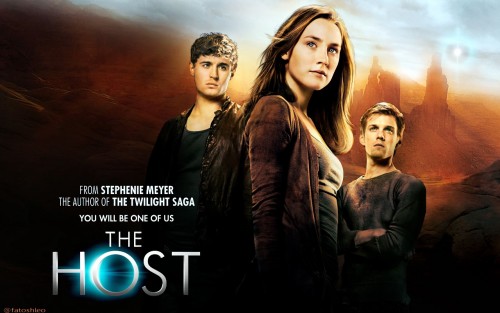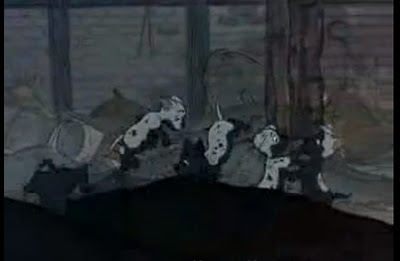This guest post by Sade Nickels appears as part of our theme week on Child and Teenage Girl Protagonists.
Whether or not The Host is “feminist” or not has been covered by Dr. Natalie Wilson in a particularly interesting piece, as Stephanie Meyers identifies as a feminist. I’m not too into the idea of calling the movie an anti-feminist piece, but its portrayal of young women and their relationships to men is deeply problematic. As Dr. Wilson has questioned and criticized this movie well, I don’t have too much to add except some thoughts about young women and heroism. I do feel obligated to say that this movie is duller than toast and the onslaught of negative reviews it received was well-deserved.
So, this movie is about an Alien race called Souls that invade all the bodies of humans and turn the planet into a peaceful place. One Alien named Wanda gets put into the body of a young girl named Melanie. Melanie does not have control over her body but her presence is still there and she manipulates Wanda into running away from the Soul community to find her little brother and her boyfriend. They find them living with a bunch of other humans who are hiding from the Souls and just trying to get by. Wanda and Melanie work to protect this community from the Souls, but mostly their purpose and justification for their acts of heroism are largely done for the men they love or have fallen or are falling in love with. Very typical and trite, but there are some elements at play that tend to deviate from a traditional hero’s journey.
Is Wanda a girl/teenage female protagonist? Technically she is not “young” as she is 1,000 years old and seemingly immortal, but she is new to Earth so that makes her young in some sense. Also, why would the Souls even have genders that mirror that of humans or have genders at all? The Souls look like beams of light and they probably aren’t even a carbon based species and yet somehow Wanda is a female? So. Frustrating. Nonetheless she is controlling a person’s body who identifies as a teenage girl and is thus somewhat restricted to her occupied body’s feelings, emotions, and categorizations. It is hard to understand why Wanda is a “female” as the audience is given very little information as to what Souls are, where they came from, what their motivations are, or how this parasitic species procreates. Maybe it is covered in the book? Maybe Stephanie Meyer never really thought about it (unlike some authors I know). Either way it a missed opportunity for talking about gender vs. sex or doing anything somewhat subversive.
The dynamic between the two female protagonists in this movie who have to work together and collaborate to be successful for their shared end goals (which is boy saving) is what is most interesting to me when thinking about their roles as heroes and the typical myth of the hero. Melanie is almost a mercenary type. Determined, very occupied with the preservation of her humanity, resistant, manipulative, brave and adept at lying and stealing. Wanda is naive and lost but operates under a strict moral compass of nonviolence and pacifism. The two react to most situations very differently but they learn skills and behaviors from one another. It is the collaboration of these two very different teenage girl characters that allow them to be successful in protecting and aiding the human community.
As mentioned before, Wanda is a pacifist; her actions as a “hero” are conducted nonviolently. In fact her nonviolent action inspires her new community to start acting in the same way. This is a sort of nice refresher to all the kick-ass action heros that have been featured on the big screen. Nonetheless, her character is extremely self-sacrificing and puts herself last in almost every situation. Would have been nice to see a hero who strikes a good balance between operating under a strong moral compass without that being overshadowed by their seemingly low self-worth.
Sade Nickels is a toddler teacher in Seattle who enjoys getting tattoos, reading children’s books and thinking about radicalism.





